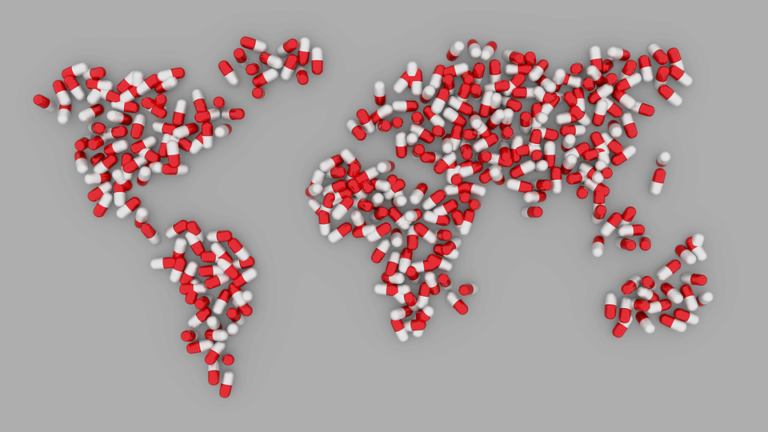As much of the world experiences a record-breaking heat wave, this
Spotlight turns its attention to vitamin D, the so-called sunshine
vitamin. Here, we inspect the latest research.
Tropical sun
The “sunshine vitamin” has a range of surprising benefits.
Vitamin D is a hot topic currently, with a raft of studies proclaiming its benefits for a variety of serious conditions.
Conversely, other recent studies have been more cautious, questioning its perceived usefulness for treating some illnesses.
Vitamin D is a nutrient that is synthesized in our skin when it is exposed to sunlight, and it is also present in some foods.
Sunlight is the best source of vitamin D, but in the winter months,
the National Institutes of Health (NIH) recommend topping up vitamin D
levels by eating vitamin D-containing foods each day. These include oily
fish, fortified milk, beef liver, egg yolks, mushrooms, and fortified
breakfast cereals.
What does vitamin D do?
Scientists know that vitamin D is essential for many aspects of
maintaining good health and that deficiency is linked with problems for
both physical and mental health.
Perhaps most notably, vitamin D helps to regulate the levels of
calcium in our bodies, strengthening our bones and preventing
bone-weakening conditions, such as osteoporosis.
Increasingly though, studies are also suggesting that vitamin D might
have protective benefits against heart failure, diabetes, cancer,
respiratory tract infections, autoimmune disease, and even hair loss.
A surprisingly large number of people have insufficient levels of
vitamin D. For instance, according to one study, more than 40 percent of
adults in the United States are deficient. Because of its prevalence,
it is important to determine what the public health implications of this
epidemic might be.
Symptoms of vitamin D deficiency can vary between individuals, but
they typically include pain in the joints, muscles, or bones; fatigue;
breathing problems; and low mood or seasonal affective disorder (SAD).
Below, we run through a number of intriguing recent studies that
investigate associations between vitamin D and an assortment of
illnesses.
Vitamin D and heart failure
Several studies have suggested that vitamin D could offer protective
benefits against cardiovascular illness, but scientists have yet to
pinpoint what mechanisms are driving this association.
Recently, though, Medical News Today reported on a study that used a
mouse model to investigate how a type of vitamin D, called
1,25-dihydroxyvitamin D3, affects heart cells. In particular, the
researchers looked at the cells responsible for developing scar tissue
following a heart attack, called cardiac colony-forming unit fibroblasts
(cCFU-Fs).
cCFU-Fs are an important area of study because, when heart tissue is
scarred, the heart has a harder time pumping blood, which can lead to
heart failure.
The researchers behind the study found that vitamin D inhibited the
action of cCFU-Fs, which prevented scar tissue from building around the
hearts of the mice in the study, potentially preventing blockages in the
cardiovascular system.
“With further study,” wrote the authors, “vitamin D could prove to be
an exciting, low-cost addition to current treatments, and we hope to
progress these findings into clinical trials for humans.”
Vitamin D and cancer
Breast cancer and bowel cancer have both been linked with cases of
vitamin D deficiency in recent studies. One of these analyzed data from
two randomized clinical trials and a prospective cohort study.
The researchers found that high levels of vitamin D were inversely
associated with risk of breast cancer among women who were cancer-free
at baseline.
Pink ribbon blue background
Studies suggest that vitamin D impacts breast cancer risk.
According to the study results, the higher the levels of vitamin D, the lower the risk of breast cancer.
This relationship remained significant even after the results were
adjusted for confounding factors, such as age, body mass index (BMI),
intake of calcium supplements, and smoking habits.
Although a link between vitamin D deficiency and colorectal cancer
has previously been reported, not all studies have been able to
replicate these findings. A new, large-scale study attempted to settle
this by drawing on data from three continents, including 5,700
colorectal cancer cases and 7,100 controls.
Antifungal drug kills dormant colorectal cancer cells
Antifungal drug kills dormant colorectal cancer cells
New research suggests that an existing antifungal drug could be
effective against particularly persistent colorectal cancer cells.
READ NOW
The researchers calculated that people whose levels of vitamin D fall
below those specified in the current guidelines have a 31 percent
increased risk of developing bowel cancer. By contrast, those with
vitamin D levels above the current recommended levels were 22 percent
less likely to develop this cancer.
Vitamin D and belly fat
Another recent study examined a previously observed link between obesity
and lower levels of vitamin D, focusing in particular on how different
types of body fat might interact with vitamin D.
The study authors reported that having excess belly fat was linked with lower levels of vitamin D:
“[T]he strong relationship between increasing amounts of abdominal
fat and lower levels of vitamin D suggests that individuals with larger
waistlines are at a greater risk of developing deficiency and should
consider having their vitamin D levels checked.”
However, the study was not able to prove whether a deficiency in
vitamin D causes fat to be stored around the belly, or if having belly
fat somehow contributes to a deficiency in vitamin D. The researchers
say that future studies will attempt to determine cause and effect in
this relationship.
Vitamin D and Alzheimer’s disease
A systematic review from researchers in Australia recently attempted to
settle the debate surrounding vitamin D’s ability to protect against
Alzheimer’s. The systematic review analyzed more than 70 studies looking
at the association.
They concluded that there was no significant association between vitamin D deficiency and risk of Alzheimer’s.
Intriguingly, the authors did suggest that — based on their
systematic review — there may be an association between exposure to the
sun’s ultraviolet rays and protection against multiple sclerosis,
Parkinson’s disease, and Alzheimer’s, but that this may be independent
of vitamin D production.
The authors said that further studies would be needed to confirm
these links and identify the mechanism responsible for such
associations.
Vitamin D and chronic pain
Over the years, some scientists have theorized that low levels of vitamin D might cause or worsen chronic pain.
So, in 2015, a group of scientists set out to collate existing evidence to examine the relationship.
Woman in pain
Could vitamin D ease chronic pain?
The resulting Cochrane review, updated in 2015, explains that:
“Observational and circumstantial evidence suggests that there may be
a role for vitamin D deficiency in the etiology of chronic painful
conditions.” The team scrutinized the findings from a number of studies.
Following the analysis, they concluded that the available scientific
evidence is not strong enough to support a connection between vitamin D
deficiency and chronic pain.
The authors write, “Based on this evidence, a large beneficial effect
of vitamin D across different chronic painful conditions is unlikely.
Whether vitamin D can have beneficial effects in specific chronic
painful conditions needs further investigation.”
So, as ever, more work will be needed to finally close the lid on this interaction.
We hope this article has enhanced your understanding of the latest
scientific thinking around this fascinating chemical. Please remember,
however, that over-exposure to sunlight — especially the hot, midday sun
— can result in skin damage and increase risk of skin cancer.






